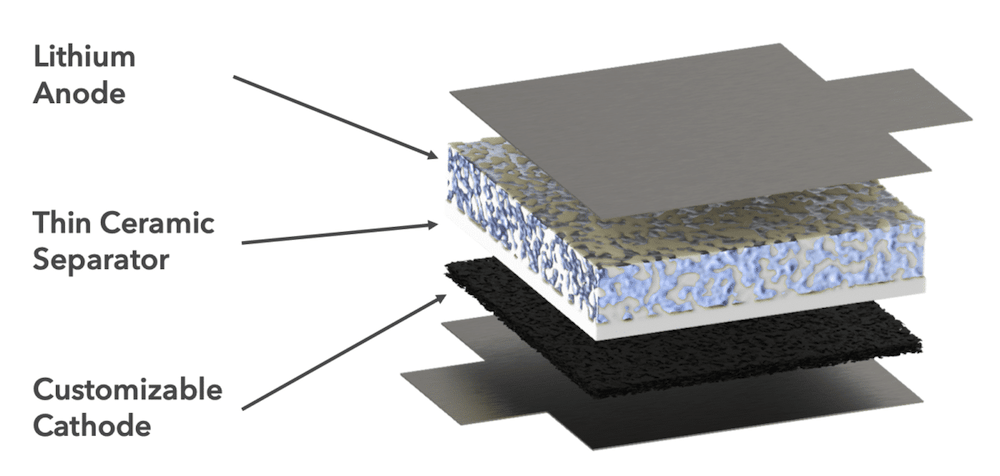Ion Storage Systems, a US battery startup based in Maryland, has received $30 million in Series A venture capital funding from the likes of Toyota Ventures, Tenaska, and Bangchak Corp. The company aims to develop factories to reach mass battery cell production.
Ion Storage is developing solid-state batteries and aims to produce 10 MWh per year and generate commercial revenue by the end of 2023. The key differences to other solid-state and next-generation batteries is a bi-layer cell design. This reduces typical lithium-ion battery defects, and works with existing and next-generation cathode chemistries, avoiding the use of critical raw materials like cobalt, nickel, and gold.
Neil Ovadia, Ion’s vice-president of operations, told pv magazine that the company can target multiple markets, ranging from defense to consumer products to electric vehicles and stationary grid storage. Ovadia noted that Ion is working on a variation to the core product meant for stationary storage applications.
“Ion’s unique technology unlocks the power of solid-state batteries through its patented Bi-layer cell design. The dense ceramic electrolyte separator is connected to a porous ceramic electrolyte scaffold,” explained Ovadia. “The porous scaffold acts as a “sponge,” creating uniform and continuous pathways for lithium metal plating without external volume change, while the dense layer acts as a solid-state separator blocking lithium metal dendrites – thereby avoiding the need for compression and preventing short circuits. This architecture makes Ion’s solid-state electrolyte compatible with a wide range of existing and next-generation cathode chemistries.”
Ovadia further detailed the non-flammable materials used in the battery cell architecture.
“Ion bi-layer cell architecture is made of inexpensive, nonflammable materials and use of a lithium metal anode has been able to meet next-generation performance metrics, including high-energy density, strong cycling performance, wide temperature range, and fast charging all at room temperature and without compression,” he said. “Its ability to utilize both existing and next generation cathode chemistries removes the need for supply constrained materials such as nickel and cobalt. The manufacturability of Ion’s technology also sets us apart as we utilize already-scaled processing and high-speed green body manufacturing techniques for our ceramic electrolyte and largely utilize existing lithium-ion manufacturing processes for cell production.”
Furthermore, the battery allows for a “cathode agnostic” approach, opening a wide range of cathode materials to be used, he said.
Ion has previously said it aims to produce more than 1 million cellphone-size batteries annually. And while those figures were not restated aain, the plan is to develop Ion’s pilot manufacturing facility at its Beltsville headquarters in 2023. It will then supply samples to interested parties and first market customers.
In terms of the struggles that companies face to scale-up production processes, Ion says it “employs existing industrial scale ceramic preparation methods.” It claims its unique structure “allows for the use of widely deployed Li-Ion battery manufacturing equipment for final cell assembly.”
This content is protected by copyright and may not be reused. If you want to cooperate with us and would like to reuse some of our content, please contact: editors@pv-magazine.com.




5 comments
By submitting this form you agree to pv magazine using your data for the purposes of publishing your comment.
Your personal data will only be disclosed or otherwise transmitted to third parties for the purposes of spam filtering or if this is necessary for technical maintenance of the website. Any other transfer to third parties will not take place unless this is justified on the basis of applicable data protection regulations or if pv magazine is legally obliged to do so.
You may revoke this consent at any time with effect for the future, in which case your personal data will be deleted immediately. Otherwise, your data will be deleted if pv magazine has processed your request or the purpose of data storage is fulfilled.
Further information on data privacy can be found in our Data Protection Policy.